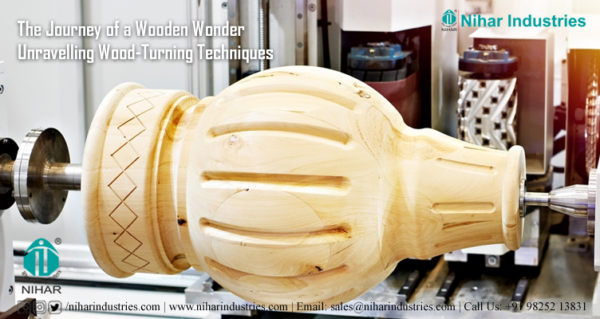Woodturning is an exquisite art that shapes raw wood into different forms. It is a traditional craft that has been in use in the woodworking industry for ages. It accentuates the raw appeal of the wood and transforms raw wood into gorgeous pieces of furniture and other objects just as artistic as utilitarian. This is a mesmerizing craft and calls for adeptness and craftsmanship for shaping wood while spinning on a lathe thus unveiling the inner beauty of said material.
Now, let’s embark on a fascinating journey of the artistry and techniques involved in woodturning.
Woodturning Basics
As said, wood turning primarily uses a lathe that rotates the wood at different speeds, thus letting the craftspeople shape it with complete precision. In this process, you have to fix a piece of wood onto the lathe and use cutting tools for sculpting and curving the material even as it spins. The most significant factors in woodturning are selecting the right wood and getting the right equipment and tools for partaking in the job.
The choice of wood for woodworking work matters. Your selection depends on the final product you intend to create. Now, there are different varieties of woods in terms of grain pattern, hardness, color, and workability, to name a few. In wood turning, you need specific tools like gouges, skew chisels, chisels, and parting tools for various projects.
Techniques used in woodturning
The main techniques are spindle, bowl, threaded, and segmented turning. In spindle turning, the wood is shaped along its length. In bowl turning, the focus remains on shaping wood into bowls, hollow forms, or plates. Threaded turning can be described as an intricate technique, where you have to create threads on wooden pieces thus letting you create threaded lids, intricate designs, and boxes.
In segmented turning, you assemble different pieces of wood to form geometric patterns before you mount them on the lathe.
Artistry and finishing touches
The most important factors are design, creativity, finishing, polishing, and preservation and care. Woodturning is not just a mechanical process, but an art form where you need vision and creativity. Craftspeople or artisans employ different finishing techniques such as sanding and buffing to bring out the natural beauty of the wood and apply finishes such as lacquers and oils. An important aspect of woodturning is achieving a polished and smooth surface.
Wood-turned pieces with proper finish need care so that their innate beauty can be maintained. They need to be protected from excessive heat, direct sunlight, and moisture so that they last long and remain alluring for generations.
Conclusion
So, in the end, wood turning can be regarded as a captivating fusion of craftsmanship, creativity, and skill. The journey of a piece of raw wood to a finely tuned creation is the perfect exemplification of the harmony the natural beauty of wood has with human artistry. It does not matter if it is a delicate spindle, an intricately threaded box, or a majestic bowl. Each wooden wonder crafted using these techniques has its unique story to narrate.

